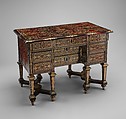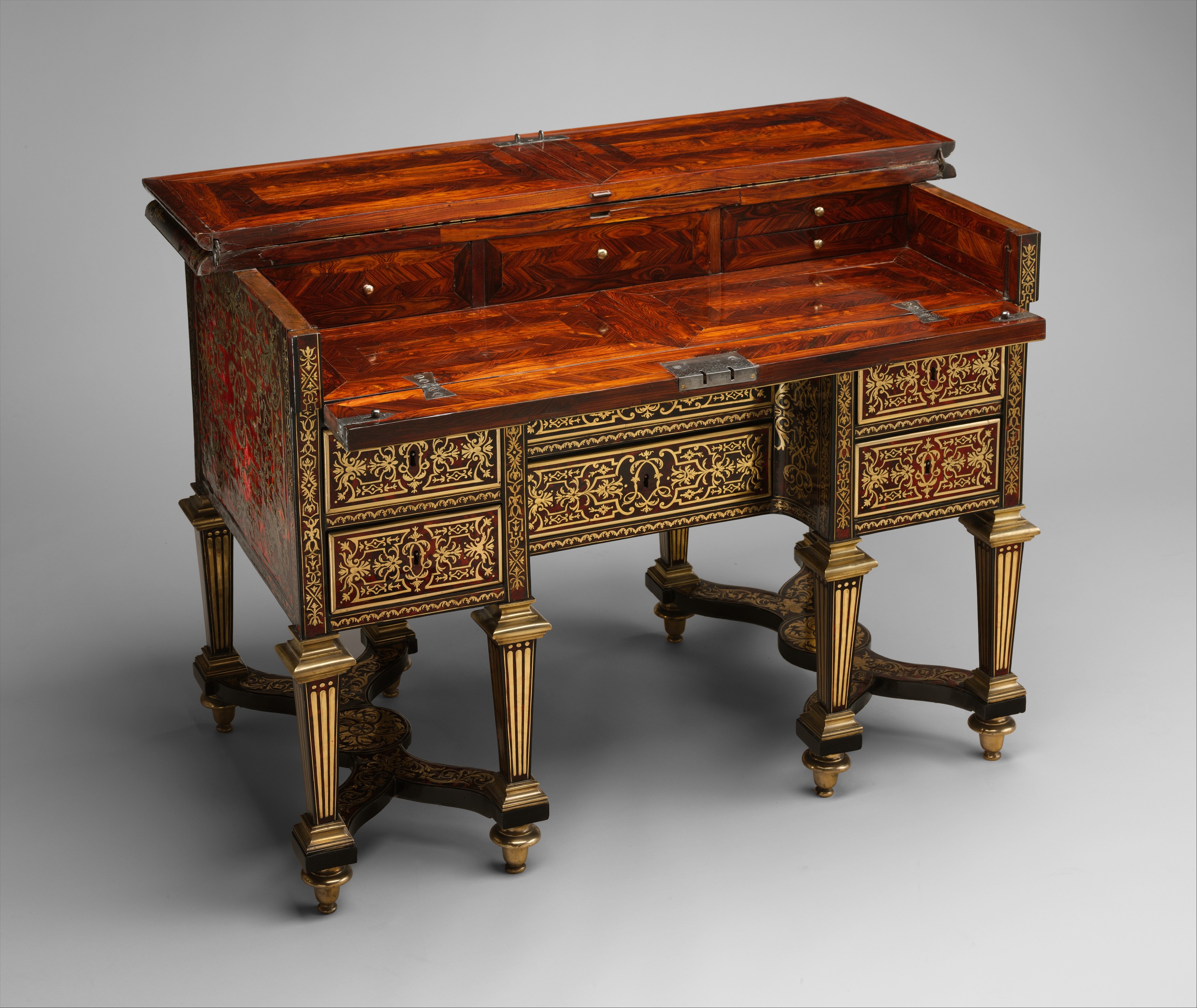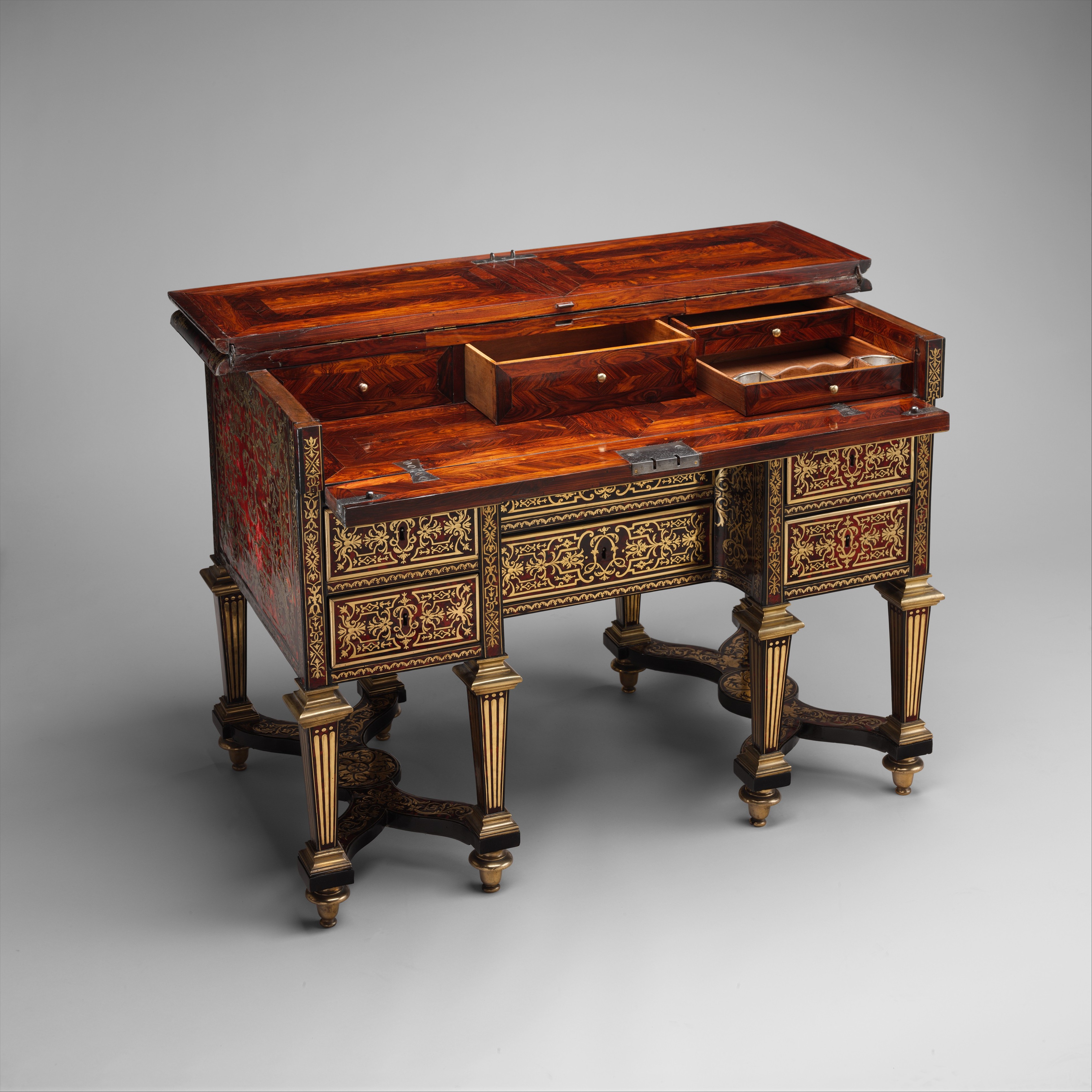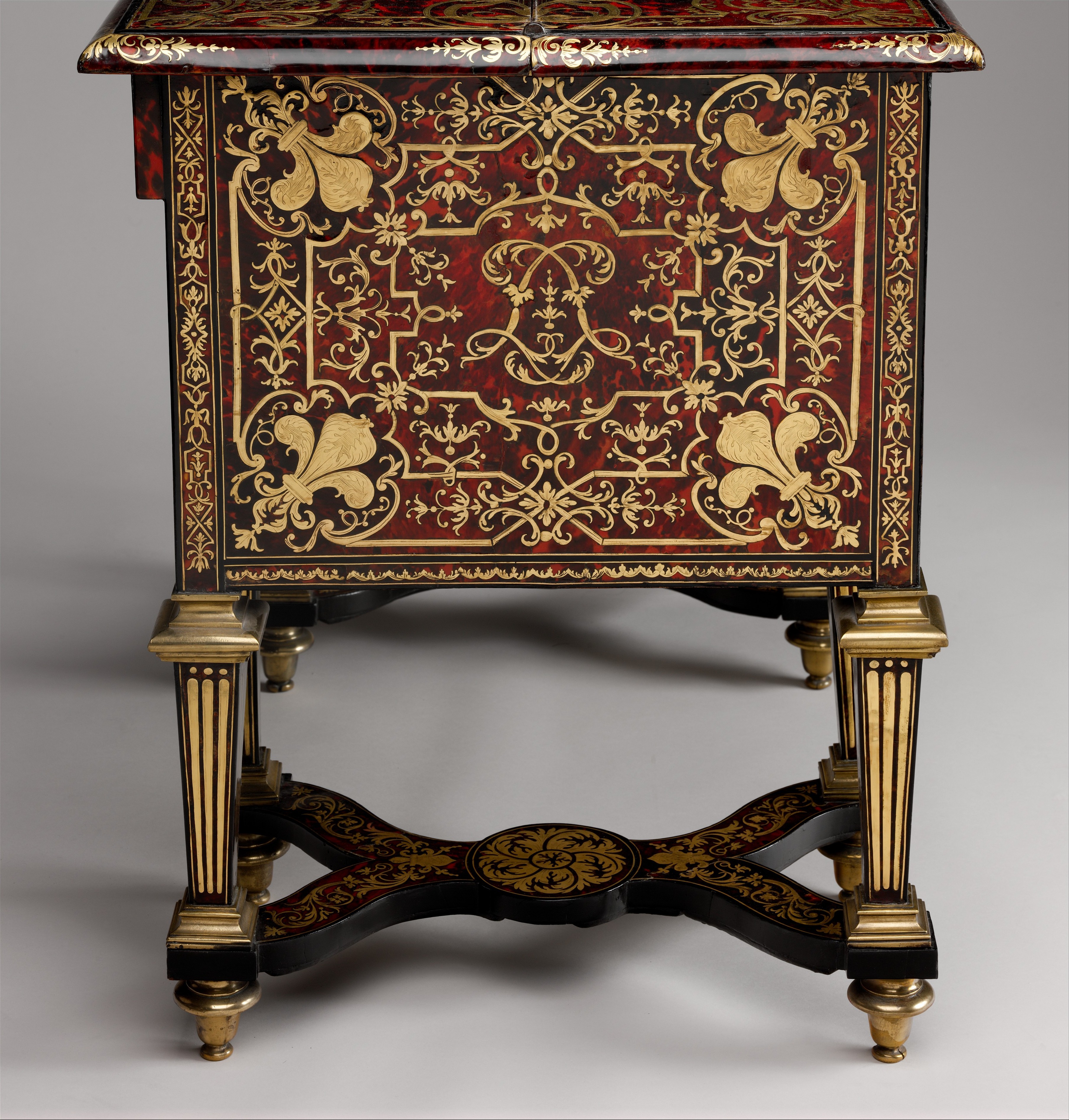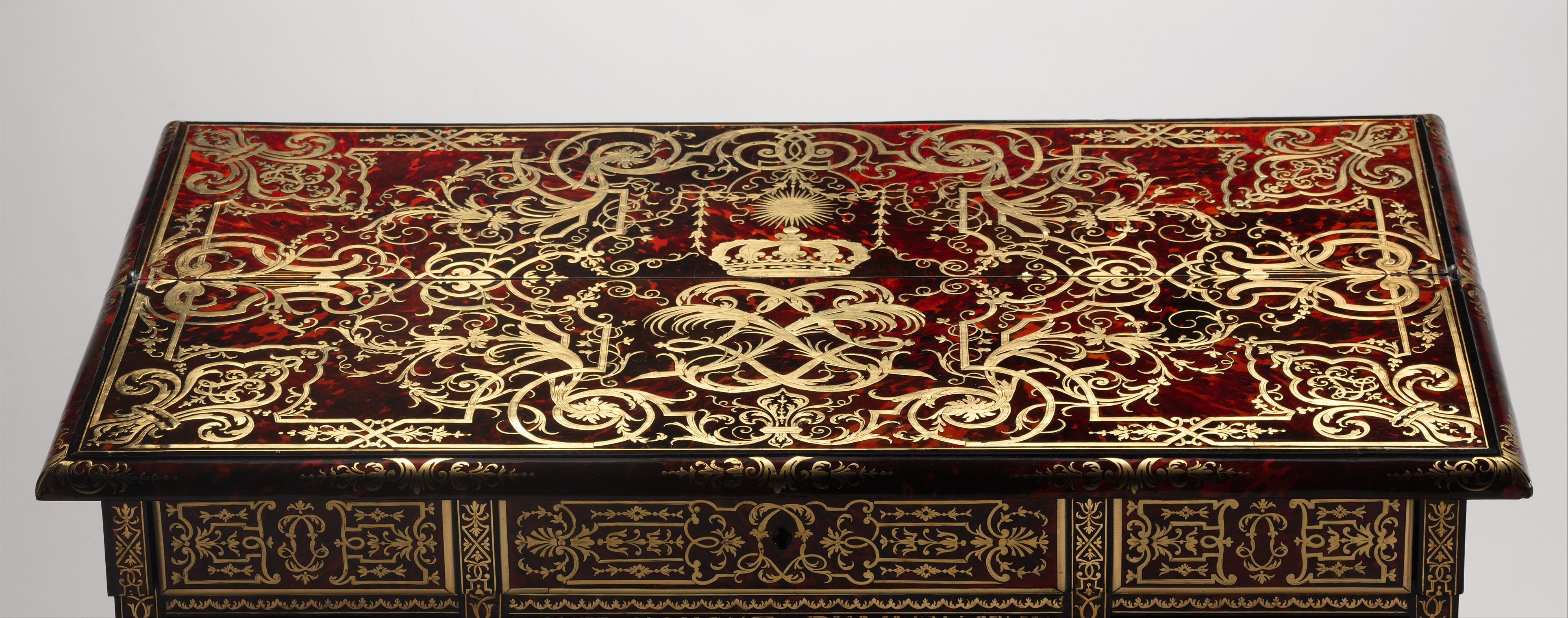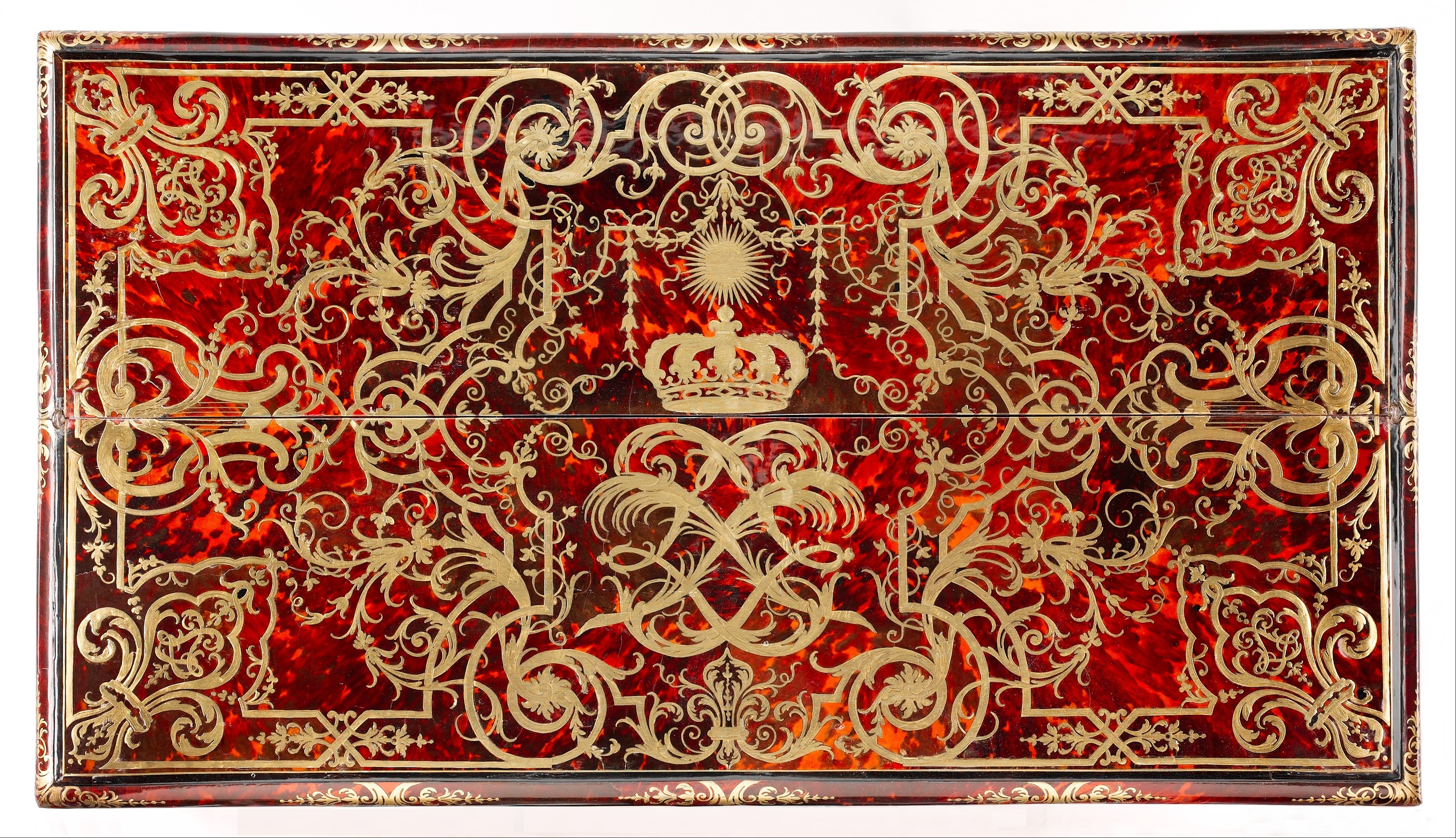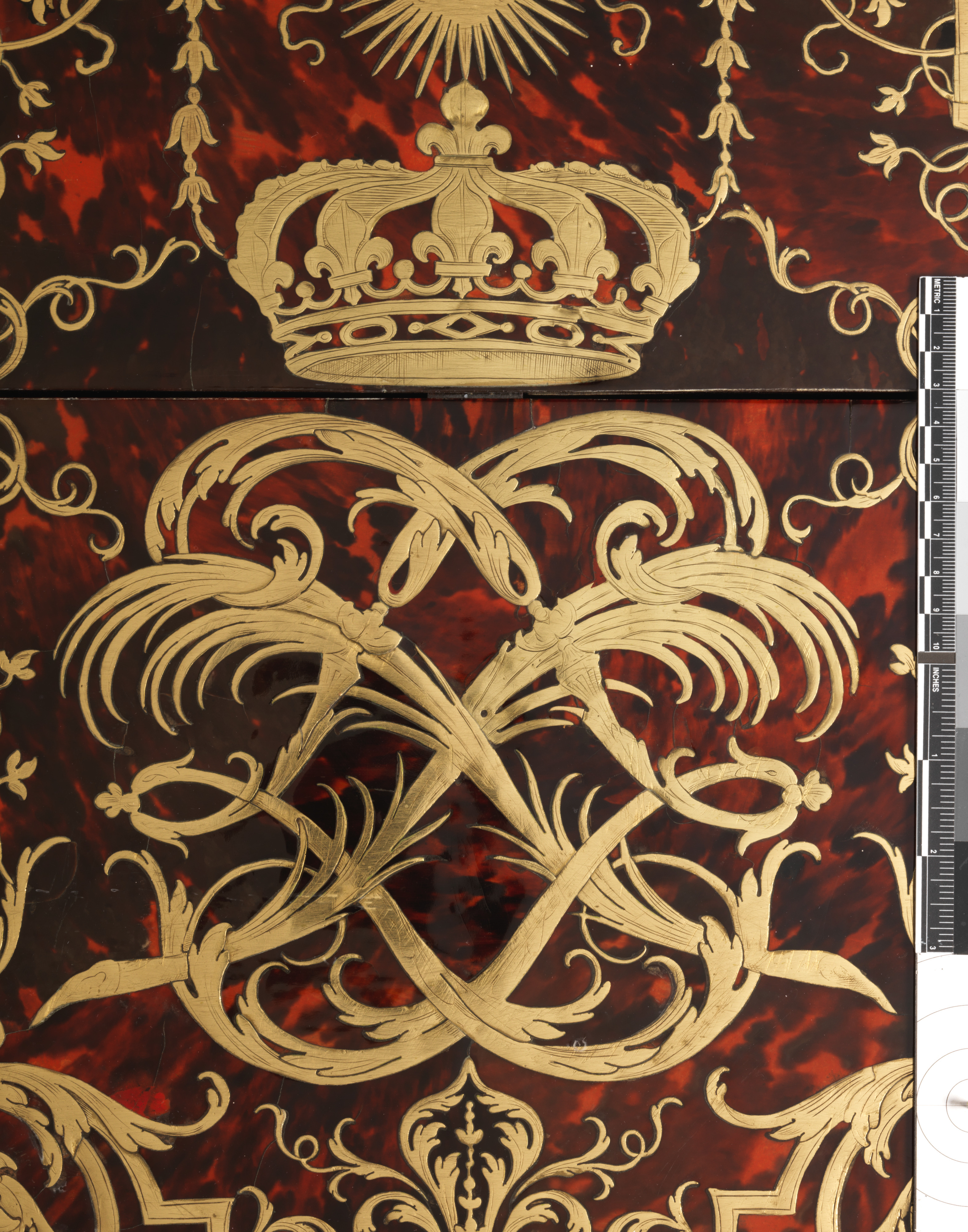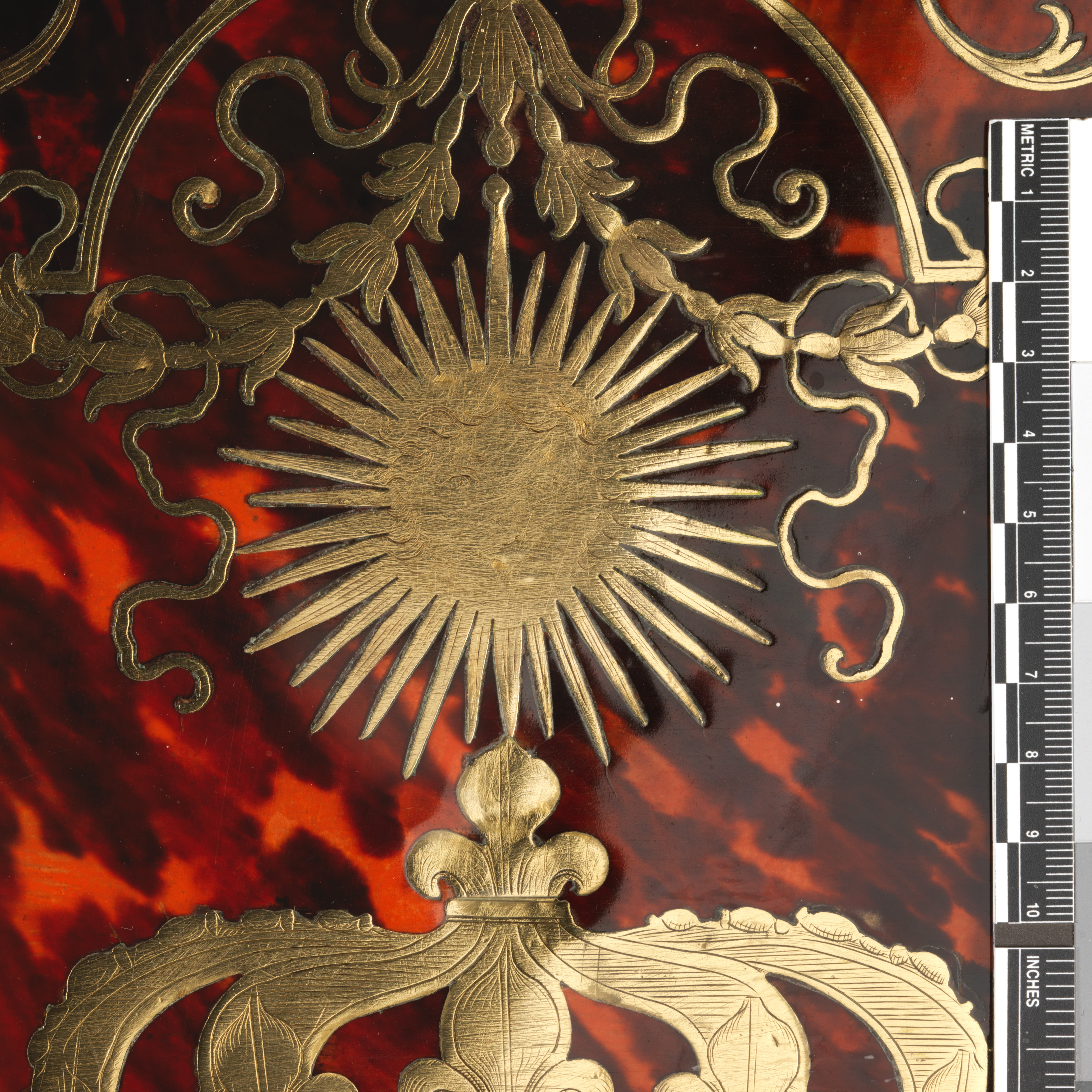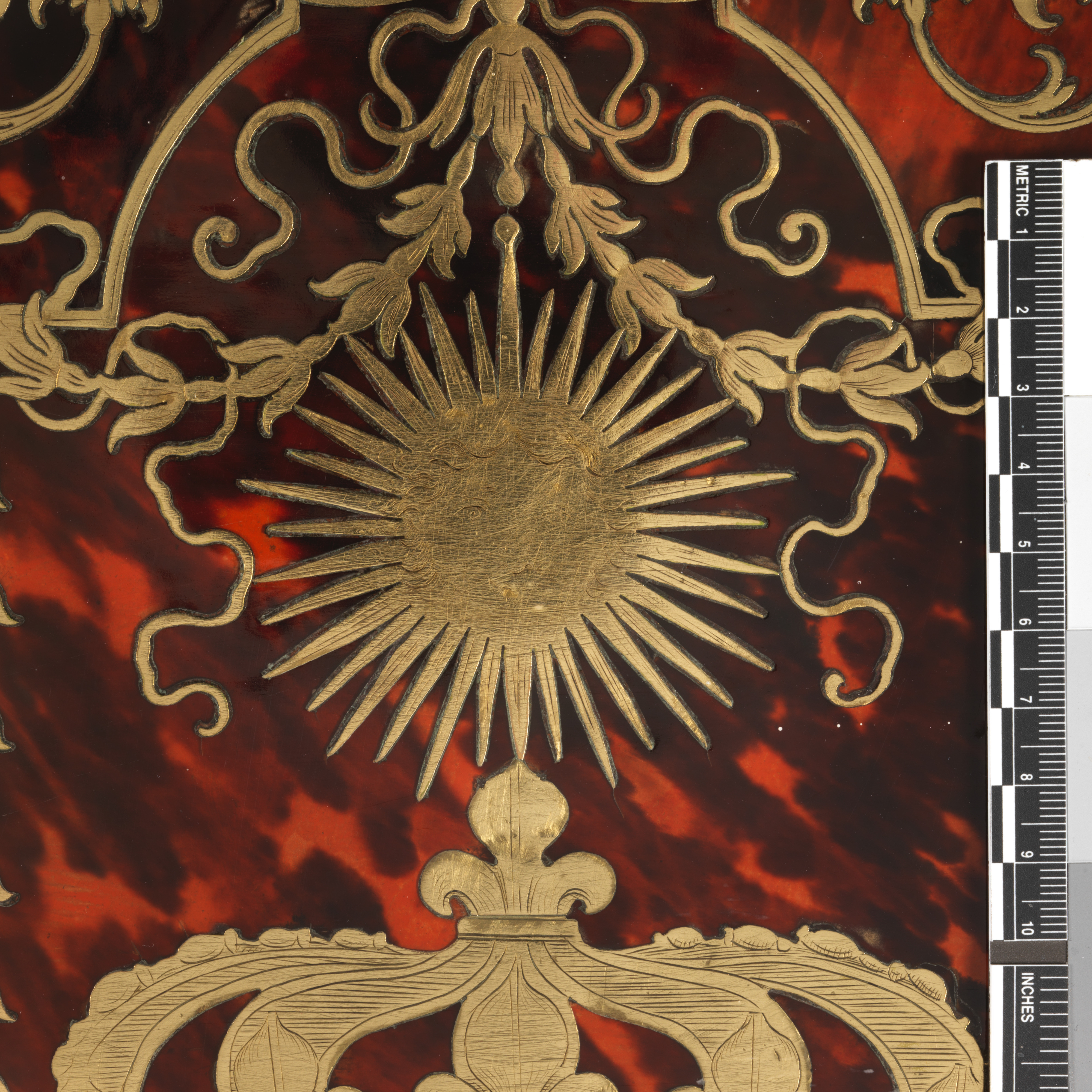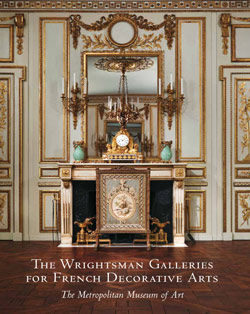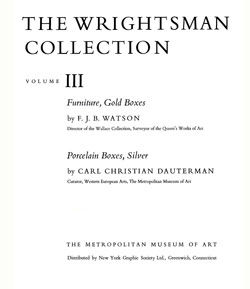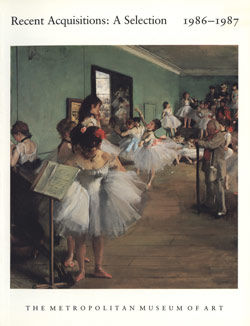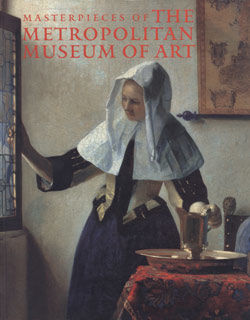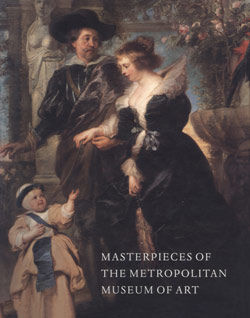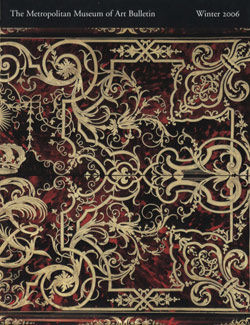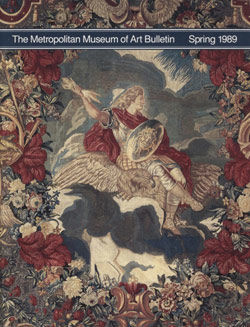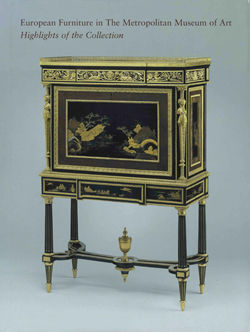Small desk with folding top (bureau brisé)
Marquetry by Alexandre-Jean Oppenordt Dutch
Designed and possibly engraved by Jean Berain French
With a folding top that lifts up to reveal a narrow writing surface, this desk is known in French as a bureau brisé ( literally, “broken desk”). Introduced about 1669, this type of writing table remained fashionable until the early years of the eighteenth century, when it was replaced by the more practical, flat-topped bureau plat. The Museum’s desk was commissioned with another almost identical example or Louis XIV’s Petit Cabinet, a small private room in the north wing of the Château de Versailles, and is one of the few extant pieces of furniture made for the personal use of the Sun King.
The exterior is embellished with marquetry of tortoiseshell and engraved brass, known as Boulle work, after the French royal cabinetmaker André-Charles Boulle (1642–1732), who was a true master of the technique. A thin sheet of red-tinted tortoiseshell was laid atop a thin sheet of brass, and an intricate pattern was cut through both layers before they were separated. The Museum’s desk received the more beautiful version of the decoration (so-called première partie), where the tortoiseshell forms the ground enriched with inlays of cutout brass. The pendant desk was veneered with the “leftover” materials, consisting of a brass ground inlaid with cutout tortoiseshell (contre partie). Without wasting any of the exotic tortoiseshell or the metal, it was thus possible to produce an identical pair, with the distinction that the decoration of the one desk was the exact reverse of the other. Jean Bérain was responsible for the design of the resplendent marquetry, which was executed by the Dutch-born cabinetmaker Alexandre-Jean Oppenordt, who on July 25, 1685, was paid 240 livres for his work.
Richly adorned with royal symbols, strapwork, and acanthus scrolls, the top of the bureau brisé shows in the center a sunburst—symbol of Apollo, the sun god, to whom Louis XIV likened himself—a crown, and a crossed-L monogram. Openwork fleurs-de-lis (symbols of the French monarchy) inscribed with smaller crossed-L monograms embellish the corners. The hinged sections that allow the top to open are straddled by two lyres, the musical instrument of Apollo.
This very specific marquetry decoration and the overall measurements make it possible to identify this writing desk and its mate in a royal inventory drawn up in 1718 after Louis’s death. Many pieces of furniture and furnishings made for the French court were sold during the French Revolution but this small writing desk and its pair had already left the royal collections during the ancien régime. Considered old-fashioned by the middle of the eighteenth century, they were auctioned off in July 1751 as two lots and appear to have led separate existences ever since. The Museum’s bureau brisé was acquired by the cabinetmaker and furniture dealer Gilles Joubert (1689–1775) for 40 livres. Its subsequent history remains largely a mystery.
#2253. Small Desk with Folding Top (Bureau Brisé)
Due to rights restrictions, this image cannot be enlarged, viewed at full screen, or downloaded.
This artwork is meant to be viewed from right to left. Scroll left to view more.
